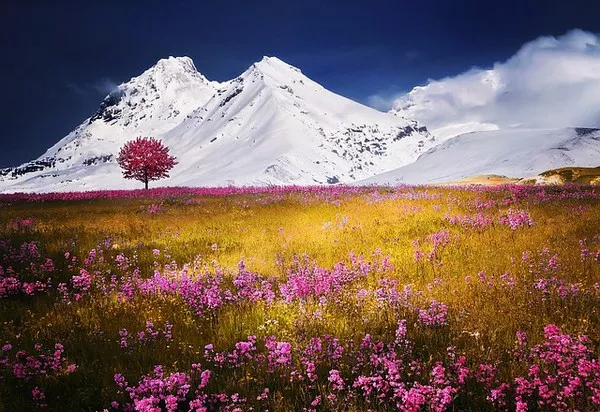Pollination is a crucial biological process that enables the reproduction of flowering plants. It involves the transfer of pollen grains from the male reproductive organ (anther) of a flower to the female reproductive organ (stigma) of the same or another flower, leading to fertilization and the production of seeds. While wind and water play a role in pollination, the majority of pollination is carried out by living organisms known as pollinators. In this article, we will delve into the diverse array of natural pollinators and understand their critical contributions to maintaining ecosystem balance and sustaining plant biodiversity.
Bees: Nature’s Super Pollinators
Bees are arguably the most well-known and efficient pollinators. With their fuzzy bodies and specialized structures such as pollen baskets and branched hairs, bees collect pollen while foraging for nectar. As they move from flower to flower, pollen grains stick to their bodies and get deposited on the stigmas of other flowers. Honeybees, bumblebees, and solitary bees all contribute to pollination, ensuring the successful reproduction of a wide range of flowering plants.
Butterflies: Graceful Pollinators
Butterflies, with their vibrant colors and delicate wings, not only captivate our imagination but also play a significant role in pollination. These insects rely primarily on flowers as a source of nectar. While feeding, butterflies inadvertently pick up pollen on their legs and bodies, which they transfer to other flowers as they continue their search for nectar. Their long proboscis allows them to reach deep into tubular flowers, making them effective pollinators for many species.
Birds: Avian Pollination Wonders
Certain bird species have adapted remarkably to perform pollination services. Hummingbirds, with their unique ability to hover in mid-air, have long beaks and tongues that enable them to reach deep into tubular flowers. As they feed on nectar, their heads come in contact with the reproductive organs of the flower, facilitating pollination. Birds like sunbirds and honeyeaters also play a vital role in the pollination of various flowering plants, especially those in regions where bees are scarce.
Bats: Mysterious Flying Pollinators
Bats are important nocturnal pollinators, particularly in tropical regions. They have co-evolved with certain plant species, such as cacti and agaves, forming mutualistic relationships. Bats are attracted to pale or white flowers that release strong fragrances. As they lap up nectar, pollen adheres to their fur or snouts, which they transfer to other flowers during subsequent visits. The unique phenomenon of bat pollination is crucial for the reproduction and survival of many night-blooming plant species.
Beetles: Ancient Pollinators
Beetles are ancient pollinators, known to have been performing this role since the time of dinosaurs. While they may not be as efficient as bees or butterflies, beetles still contribute significantly to pollination. Many beetles are attracted to large, bowl-shaped flowers with strong scents. As they crawl around the flower, pollen gets attached to their bodies and is transferred to other flowers they visit. This form of pollination is believed to have driven the evolution of certain flower shapes and characteristics.
Other Pollinators: Flies, Wasps, and More
Flies, including hoverflies and bee flies, fulfill an essential pollination role, particularly for less showy and foul-smelling flowers. Similar to beetles, flies inadvertently pick up pollen while feeding on flower nectar. Wasps, despite their fearsome reputation, also participate in pollination, especially when searching for sugary substances. Other lesser-known pollinators include ants, moths, and even some mammals like rodents and marsupials.
Conclusion:
Pollination is a fascinating process that relies on a diverse range of pollinators to ensure the successful reproduction of flowering plants. Without these vital interactions, our ecosystems would suffer, leading to a decline in plant biodiversity and impacting food production. Preserving and protecting these pollinators and their habitats is crucial for maintaining a healthy and sustainable environment for both humans and wildlife alike. By understanding and appreciating the invaluable role played by nature’s pollinators, we can work towards their conservation and secure the future of our planet’s floral wealth.


